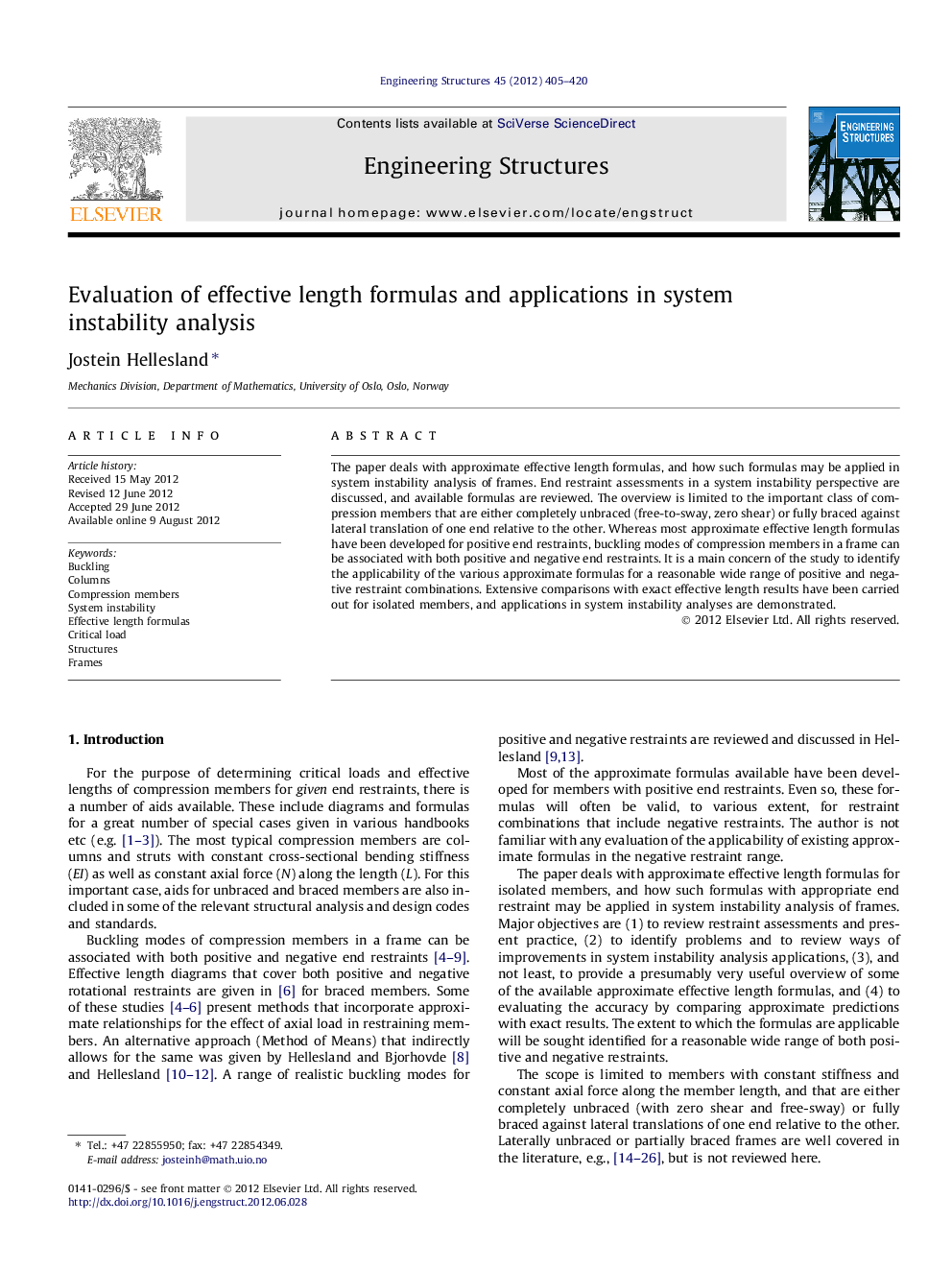| Article ID | Journal | Published Year | Pages | File Type |
|---|---|---|---|---|
| 267139 | Engineering Structures | 2012 | 16 Pages |
The paper deals with approximate effective length formulas, and how such formulas may be applied in system instability analysis of frames. End restraint assessments in a system instability perspective are discussed, and available formulas are reviewed. The overview is limited to the important class of compression members that are either completely unbraced (free-to-sway, zero shear) or fully braced against lateral translation of one end relative to the other. Whereas most approximate effective length formulas have been developed for positive end restraints, buckling modes of compression members in a frame can be associated with both positive and negative end restraints. It is a main concern of the study to identify the applicability of the various approximate formulas for a reasonable wide range of positive and negative restraint combinations. Extensive comparisons with exact effective length results have been carried out for isolated members, and applications in system instability analyses are demonstrated.
► Overview of effective (buckling) length factors for braced and unbraced columns. ► System instability by isolated column considerations. ► Restraint assessments for columns isolated from the frame of which they are a part. ► Review of conventional approach for vertical interaction between adjacent columns. ► Improving conventional effective length predictions using the “Method of Means”.
